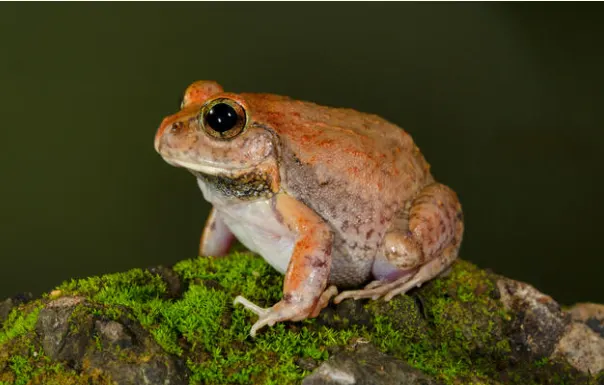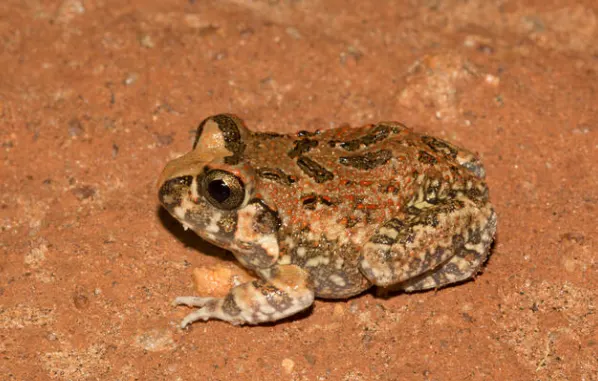The burrowing frog, an intriguing amphibian, can be found near marshes, streams, and lakes. This unique creature, scientifically classified under the genus Heleioporus, is native to Oceania and belongs to the family Myobatrachidae. Burrowing frogs have distinctive physical characteristics and play a crucial role in their ecosystems.
Table of Contents
Habitat and Physical Characteristics
Burrowing frogs inhabit forests, rivers, and marshes, where they dig burrows close to slow-moving water sources. Their muscular arms and non-webbed feet are specifically adapted for digging. These frogs have long limbs, rough, bumpy skin, and can vary in color from brown and grey to yellow and green. Their permeable skin allows them to absorb moisture and oxygen directly from their environment.

Diet and Behavior
Primarily carnivorous, burrowing frogs feed on insects, worms, and spiders. They use their long, sticky tongues to catch prey. These frogs are solitary and spend most of their lives underground, emerging primarily during the breeding season or after heavy rainfall.
Conservation Status and Threats
The burrowing frog is listed as vulnerable due to habitat loss, pollution, and climate change. Their habitats are threatened by urbanization, deforestation, and agricultural expansion. Pollution from pesticides and other chemicals further endangers their populations. Conservation efforts are crucial to protect these amphibians and their habitats.
Reproduction and Lifespan
Burrowing frogs lay eggs in burrows or beneath vegetation near water sources. The eggs remain dormant until rain or water flow carries them to larger pools, where tadpoles develop. Depending on the species, tadpole development can take from 12 weeks to a year. Eastern owl frogs, a species of burrowing frog, can live up to 15 years.

Notable Species
The Heleioporus genus includes several species:
- Giant Burrowing Frog (Heleioporus australiacus): Also known as the eastern owl frog, native to Southeastern Australia.
- Western Spotted Frog (H. albopunctatus)
- Hooting Frog (H. barycragus)
- Moaning Frog (H. eyrei)
- Whooping Frog (H. inornatus)
- Sand Frog (H. psammophilus)
Other notable burrowing frogs include the Indian burrowing frog, ornate burrowing frog, and Mexican burrowing frog.
Burrowing frogs are fascinating creatures with unique adaptations for life underground. Understanding and protecting these amphibians is vital for maintaining the delicate balance of their ecosystems. Conservation efforts and reducing human impact on their habitats are essential to ensure the survival of these remarkable frogs for future generations.
- Enchi Ball Python: A Unique and Stunning Morph of Python regius - March 27, 2025
- Emerald Tree Monitor: The Enigmatic Green Guardian of the Rainforest - March 26, 2025
- The Egyptian Cobra (Naja haje): A Fascinating Serpent - March 25, 2025
